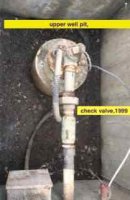Okay, but if you are using an oil additive or a synthetic oil in your car you are no longer comparing apples to apples with manufacturer's specs for oil. You are now muddying the waters by introducing additional variables that the manufacturer didn't address. Try to stick with an apples to apples comparison, it will make it easier for you to understand all this.
Back to submersible well motors, I am not saying the motor cannot handle pumping higher temperature water, even when it isn't de-rated, I am merely saying that anytime you use an electric device in any environment that is warmer than it was intended for, you are likely reducing the life of that electrical device. That fact isn't even debatable. Maybe you are arguing that submersible motor manufacturers purposely lie about the capabilities of their respective motors to remain properly cooled in warmer water, but if that were so what would be the motive? If you were designing, engineering and manufacturing a single motor to withstand a multitude of liquid environments, including warm water pumping conditions, you would be costing yourself business by not promoting it to handle the environments you designed it to handle. Your argument is devolving more into conspiracy theory than rational thought at this point.
I, as stated previously multiple times, sell and use your CSV product. I just always make sure to account for the motor manufacturer's minimum cooling specs when I install any system, including those that use a CSV. It is just patently irresponsible not to adhere to the cooling specs of a manufacturer, especially when those cooling issues aren't even an issue for majority of installations and require zero additional work or money to satisfy.

